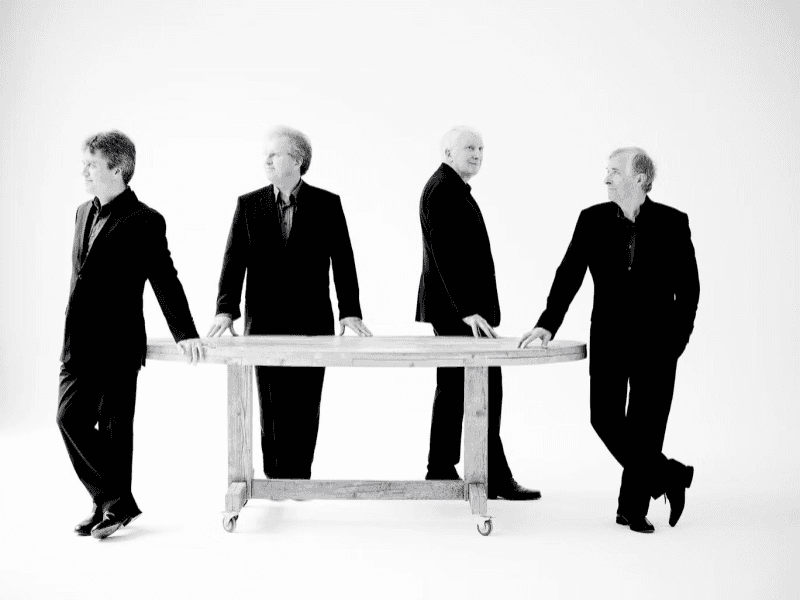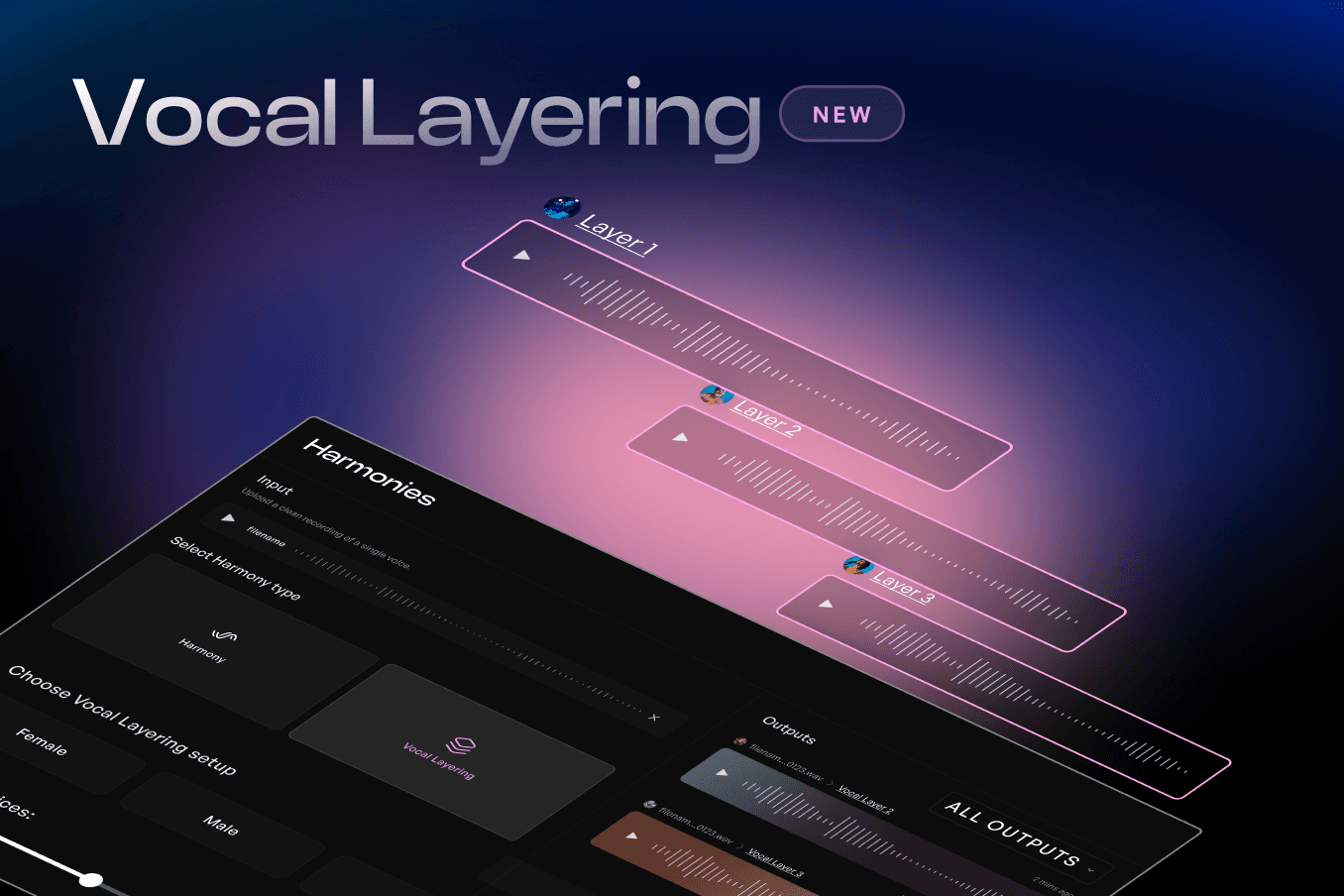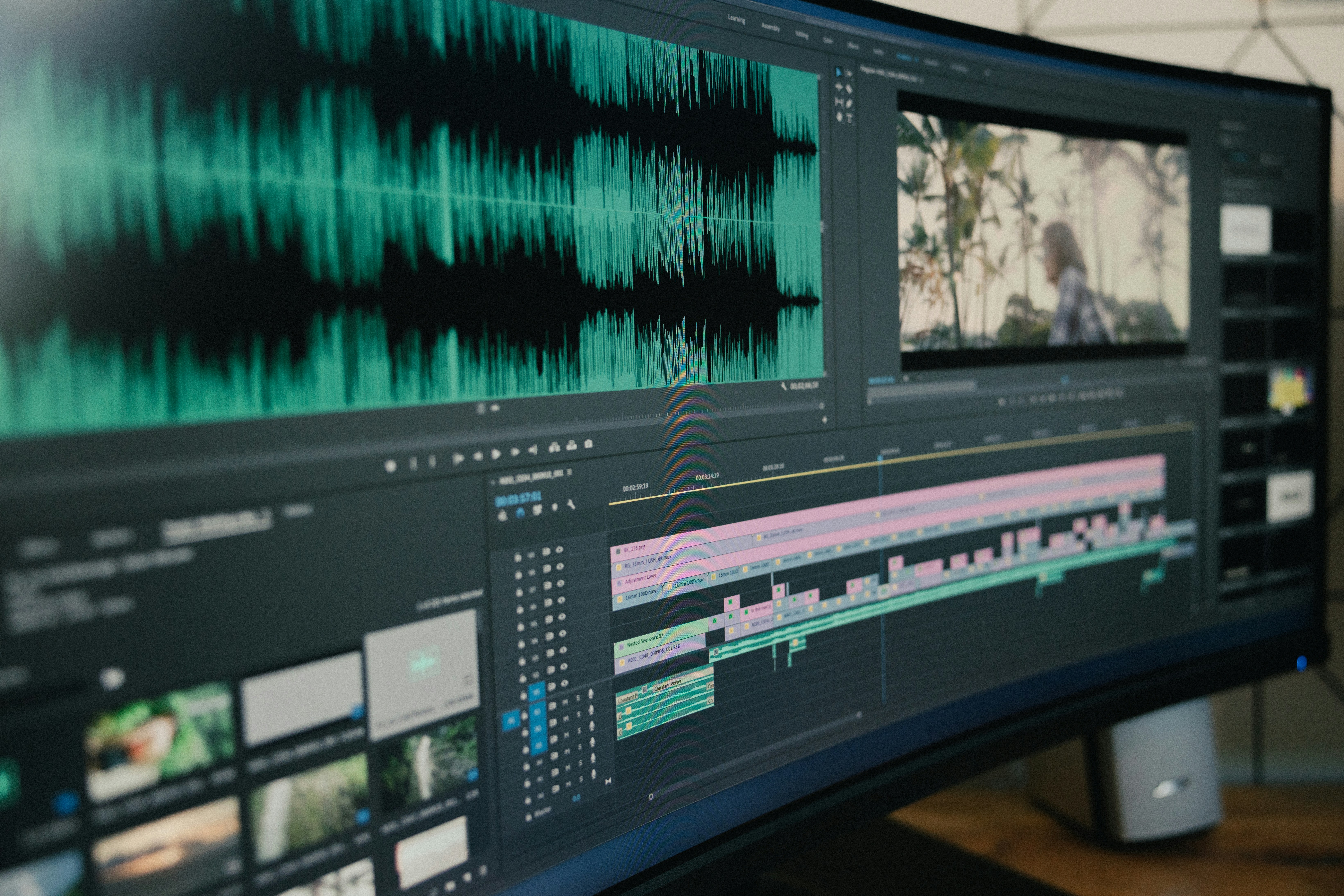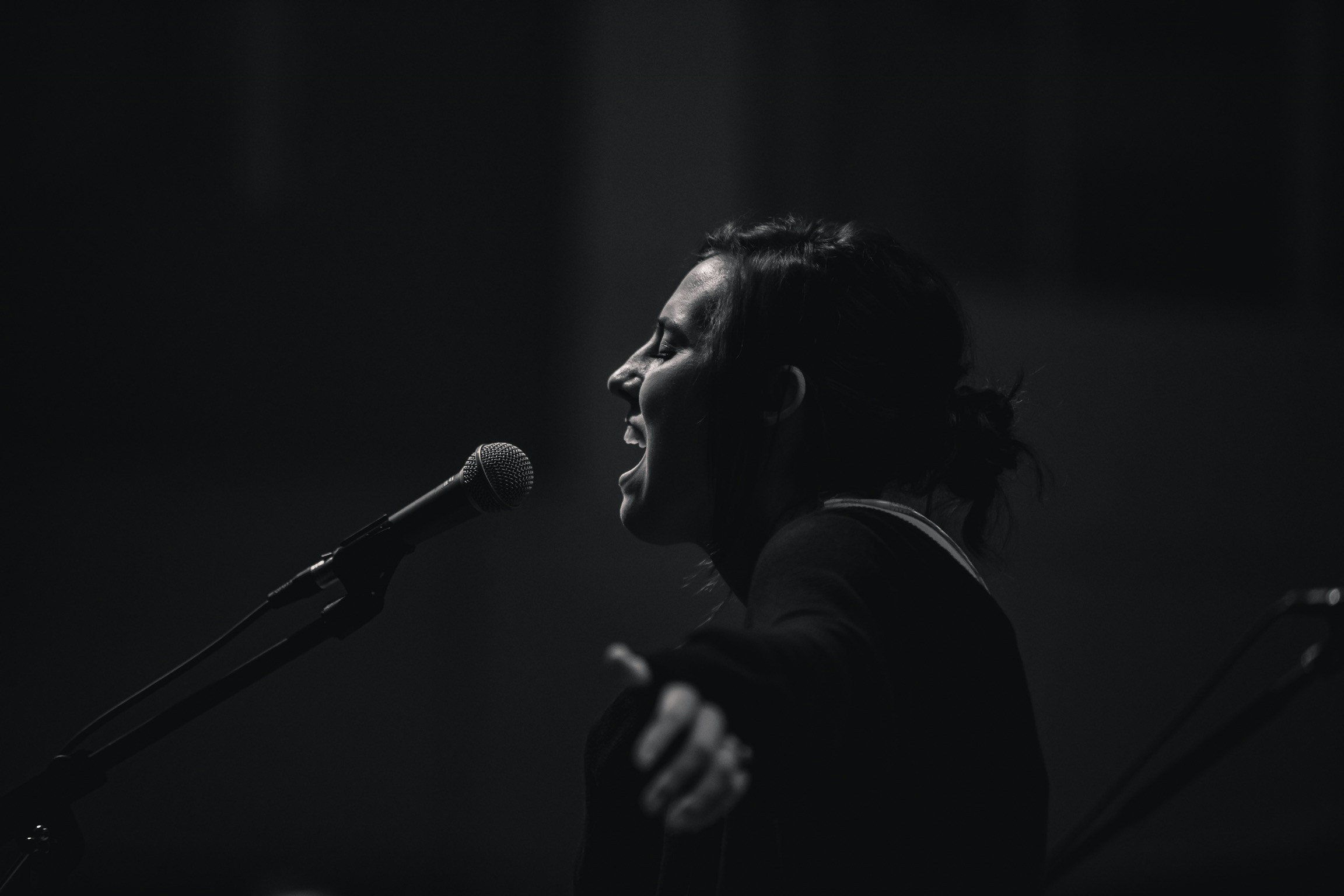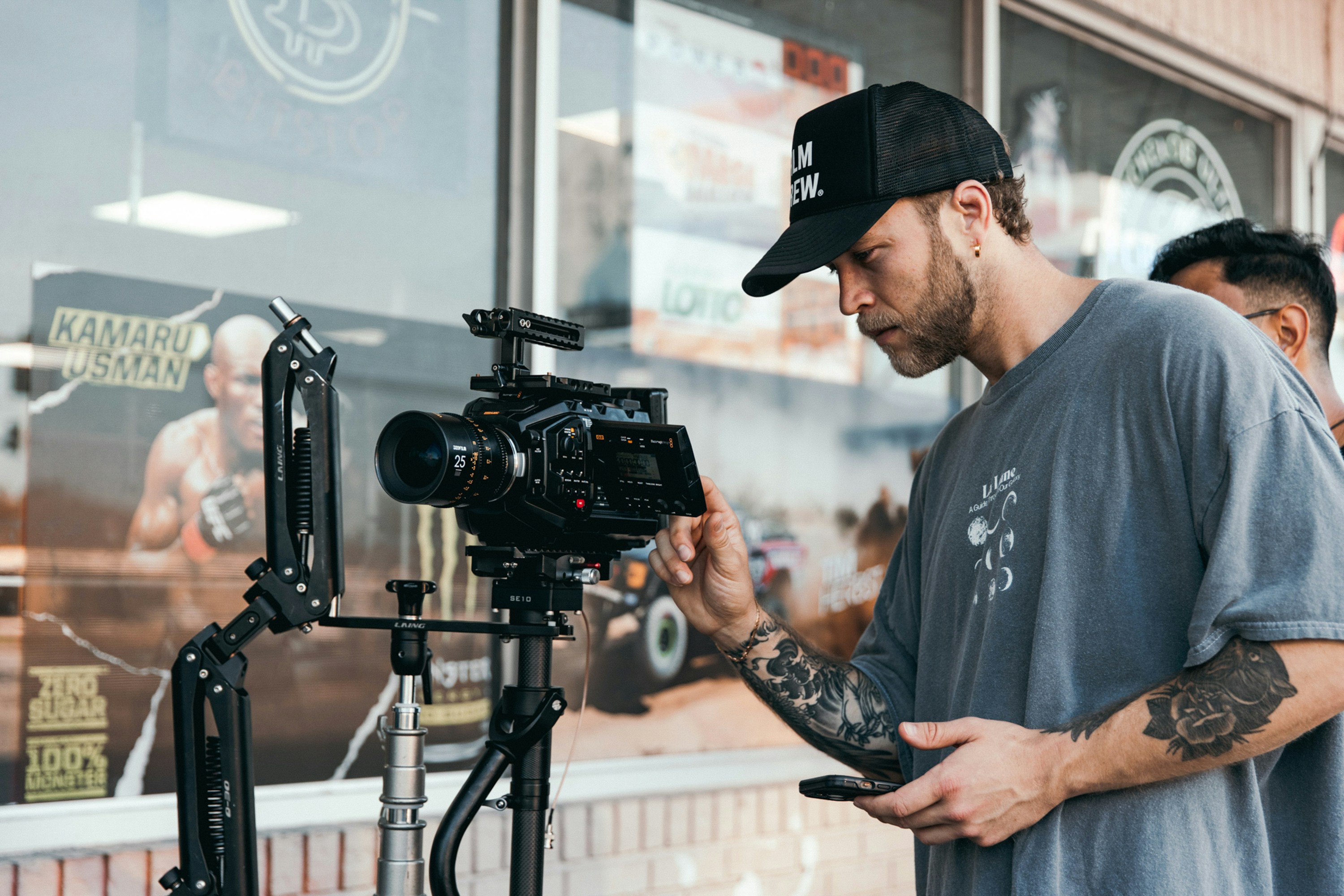Creating Your Own Choir: A Choral Experiment with Kits AI
Written by
Published on
June 25, 2024
About ten years ago, I was living in Brooklyn, soaking up as much music I could. One day, I wandered into Earwax Records and asked the somewhat aloof connoisseur working behind the desk if they could recommend something out of the ordinary. Expecting the latest avant-noise export, I was shocked when handed an album by The Hilliard Ensemble, an English a cappella quartet on the famed ECM record label. Their ethereal harmonies felt out of place amongst Bedford Ave’s hipsters, yet their celestial sounds captivated me instantly.
Venturing into AI-Enhanced Choirs with Kits AI
Inspired by the Hilliard Ensemble, I set out to explore what Kits.ai could offer beyond the standard “choir” presets found in VST’s. My goal was to seek more personality, richness and authenticity compared to the sterile, in the box choral sounds we often encounter.
The Experiment
Setting Up the DAW: In my DAW, I opened an instance of Kontakt, using the preset “Choir [a]” as my foundation. After crafting a short melodic piece, I identified individual parts by solo’ing different single-note segments of my piece contained within a short range.
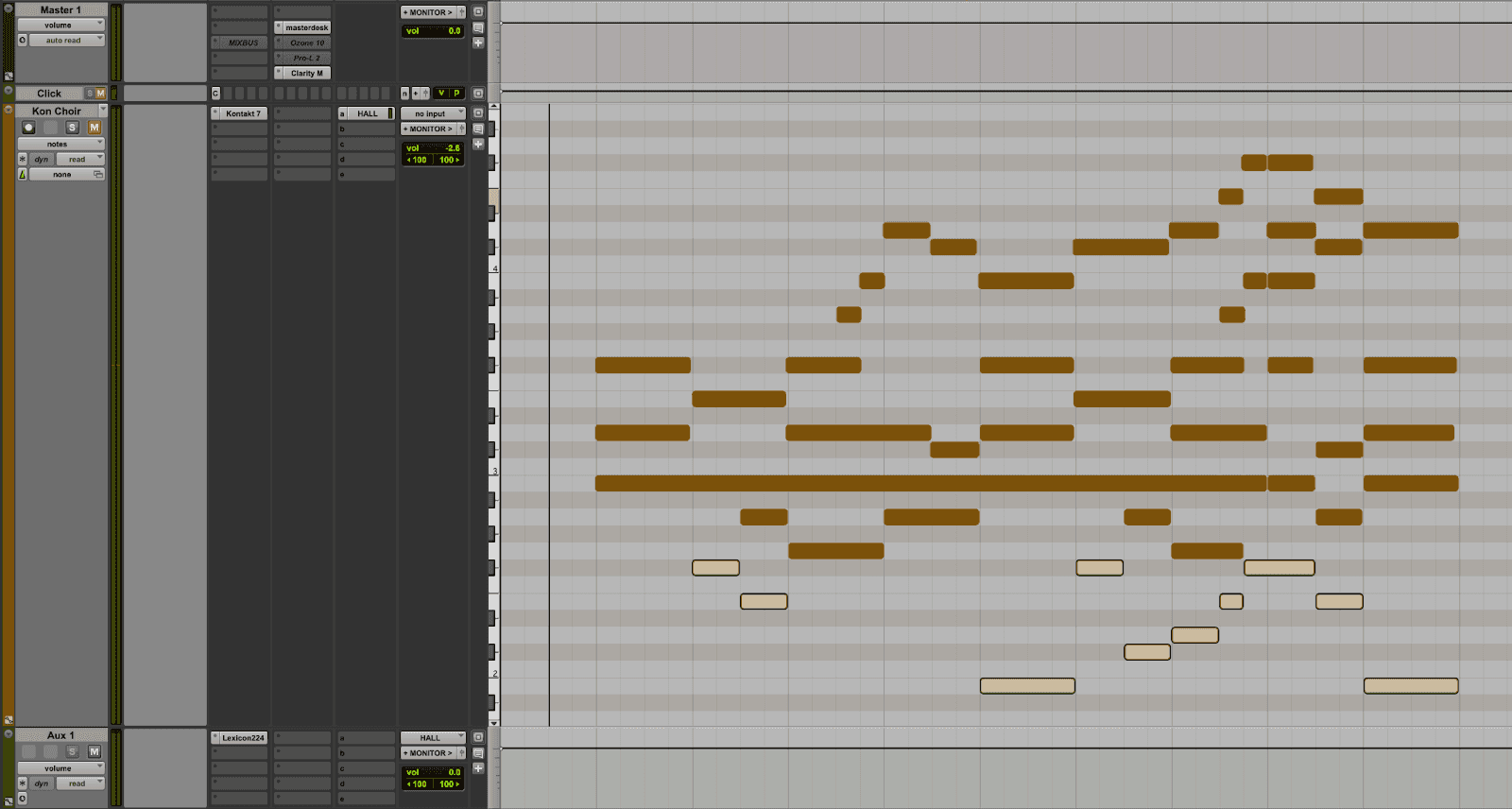
2. Creating Vocal Stems: After lowering the reverb on the preset, I began bouncing each part down to individual monophonic tracks. In total, my choir comprised of seven different voices, each occupying a distinct pitch range.
3. Uploading to Kits.ai: With my individual vocal stems ready for upload, I headed over to Kits.ai and selected “Convert” from the menu on the left side of the page.
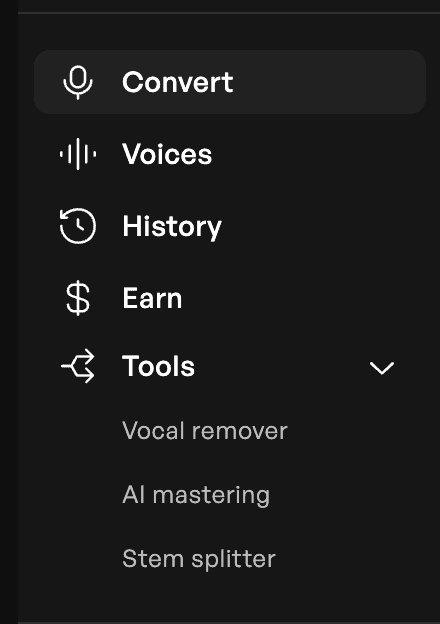
I then clicked the “+” sign next to “Select A Voice.”
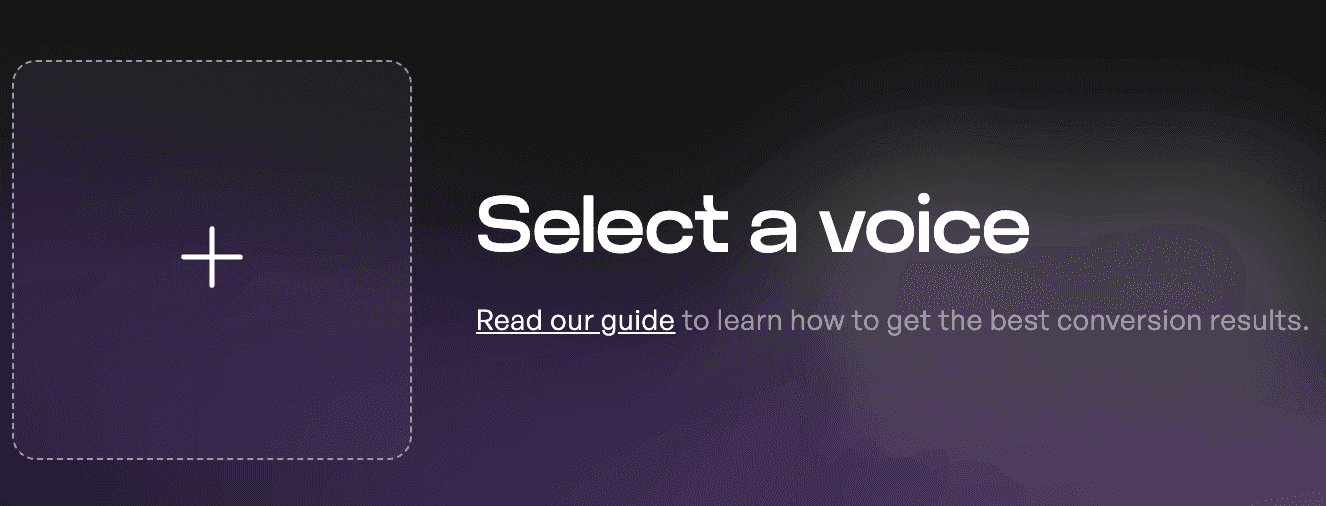
Selecting Vocalists: With the new roll-out of Kits Community Voices and the Kits Earn program, I was eager to check out what these new vocalists had to offer. By participating in Kits Earn, artists can upload their voice models and earn revenue whenever their models are used, creating new income streams and ensuring the talent behind the voices is recognized and rewarded. In a time where many companies demonstrate complete disregard by training their models without an artist’s consent, investing in ethical AI facilitates a sustainable creative ecosystem and provides peace of mind at a time when there is an understandable paranoia reverberating throughout the artistic community.

Building the Choir: I decided to piece together my choir working from the top down, starting with a vocalist comfortable in a high range. To reveal my potential candidates, I selected the drop down menu from the “Pitch Range” button and scrolled down to high.
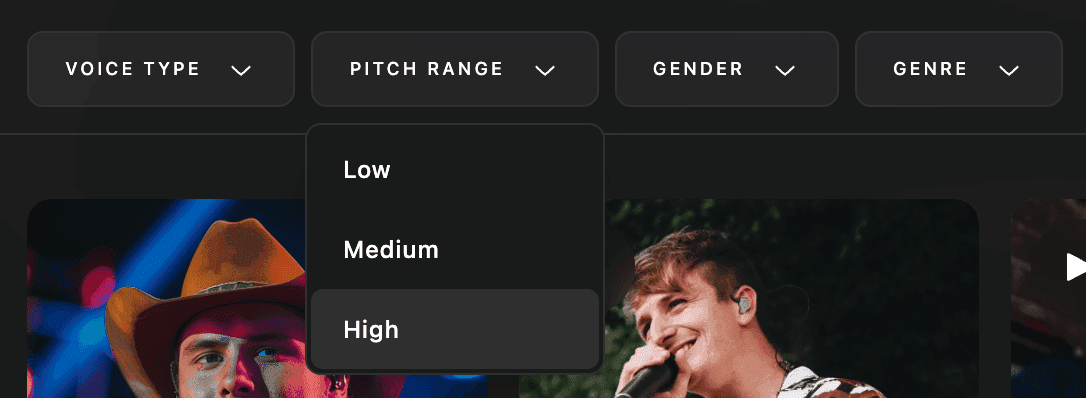
This narrowed my search to five potential singers. It seemed appropriate to have a female vocalist in this highest range, so I first selected “Keighty”, described as having a “smooth voice great for pop and R&B.” Next step was to drag and drop my highest vocal stem into the “Audio Input” box. It was at this point that I received a notification that this part was actually out of Keighty’s comfortable range.
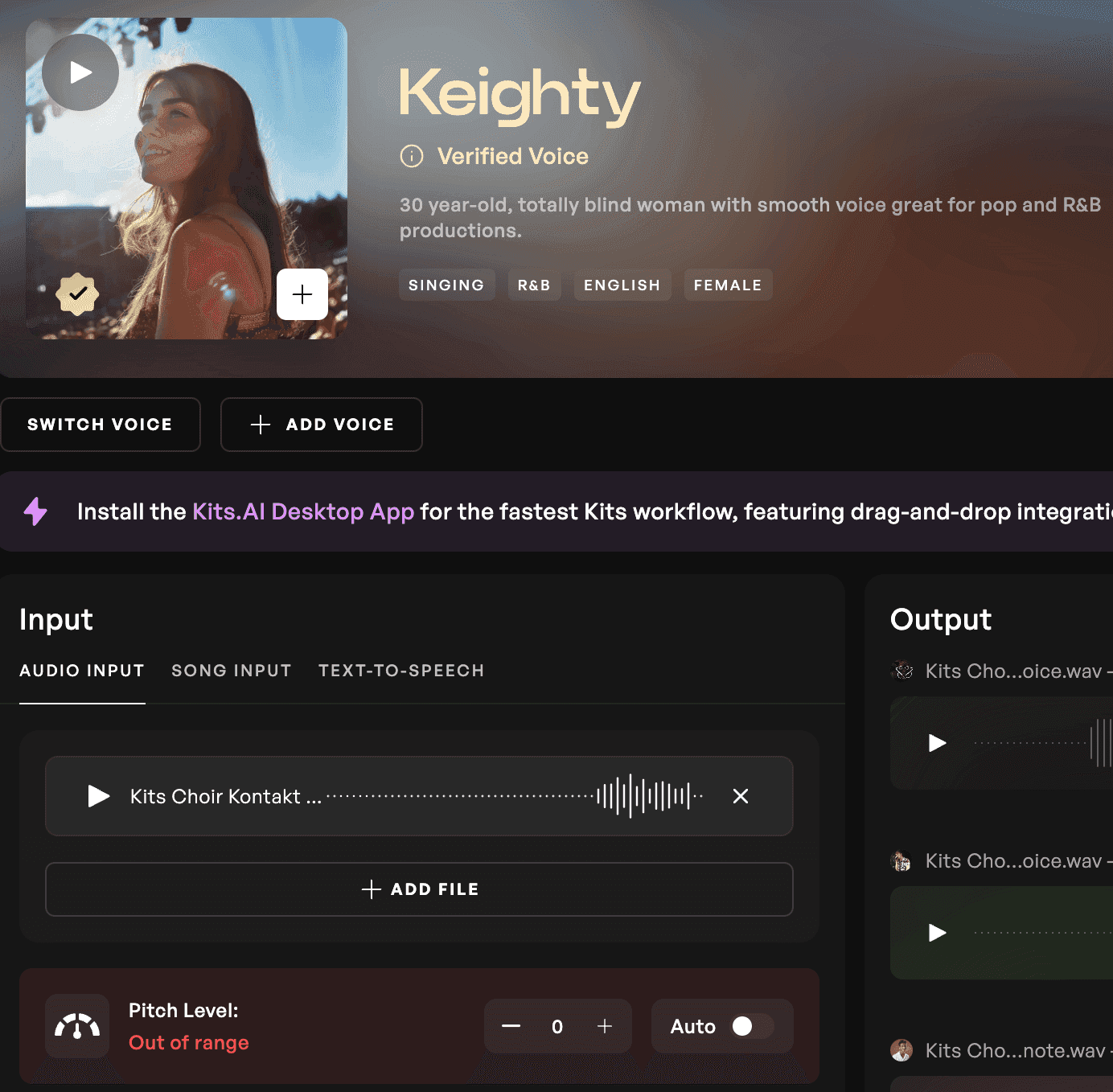
To audition a different singer, I simply hit “Switch Voice” and selected “Lena Xena”, which the Pitch Level now identified as “Okay”.
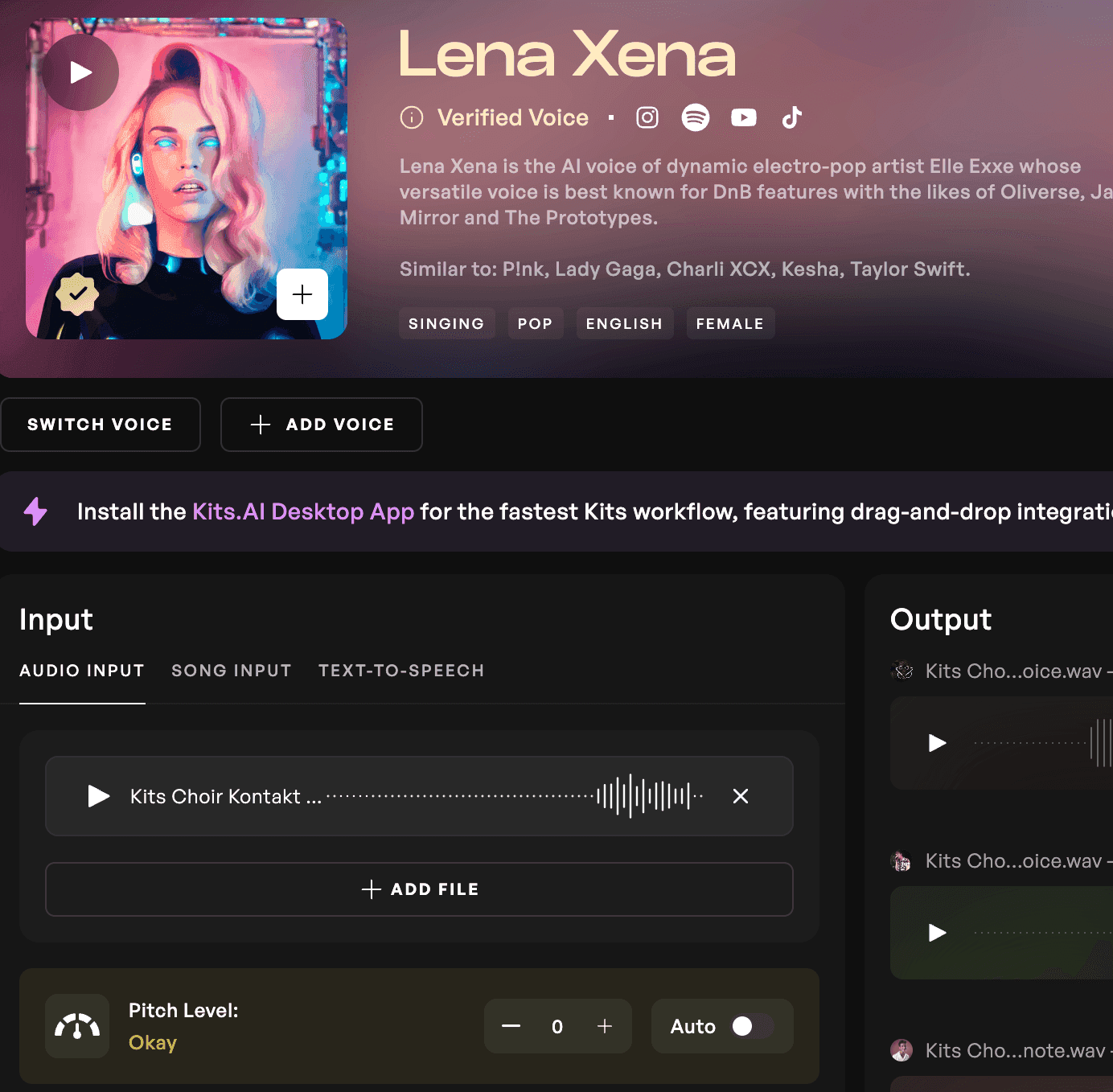
With Lena now in position to cover the highest notes, I hit the “Convert” button and in a few moments had the first new vocal track of my choir. I continued this audition process for each of my stems, soon assembling a diverse collection of singers from different backgrounds and musical styles. Because my comparison track produced with Kontakt sounded as if each note contained multiple singers, I decided it best to go through and double each part with a collection of Kits royalty-free voice models.

Finalizing the Choir
Finally, I imported all the new stems into my DAW. For a fair comparison, I ensured the built-in Kontakt reverb was muted, and sent both the original Kontakt piece and my new stems to the same reverb, the UAD Lexicon 224, known for its lush hall algorithm.
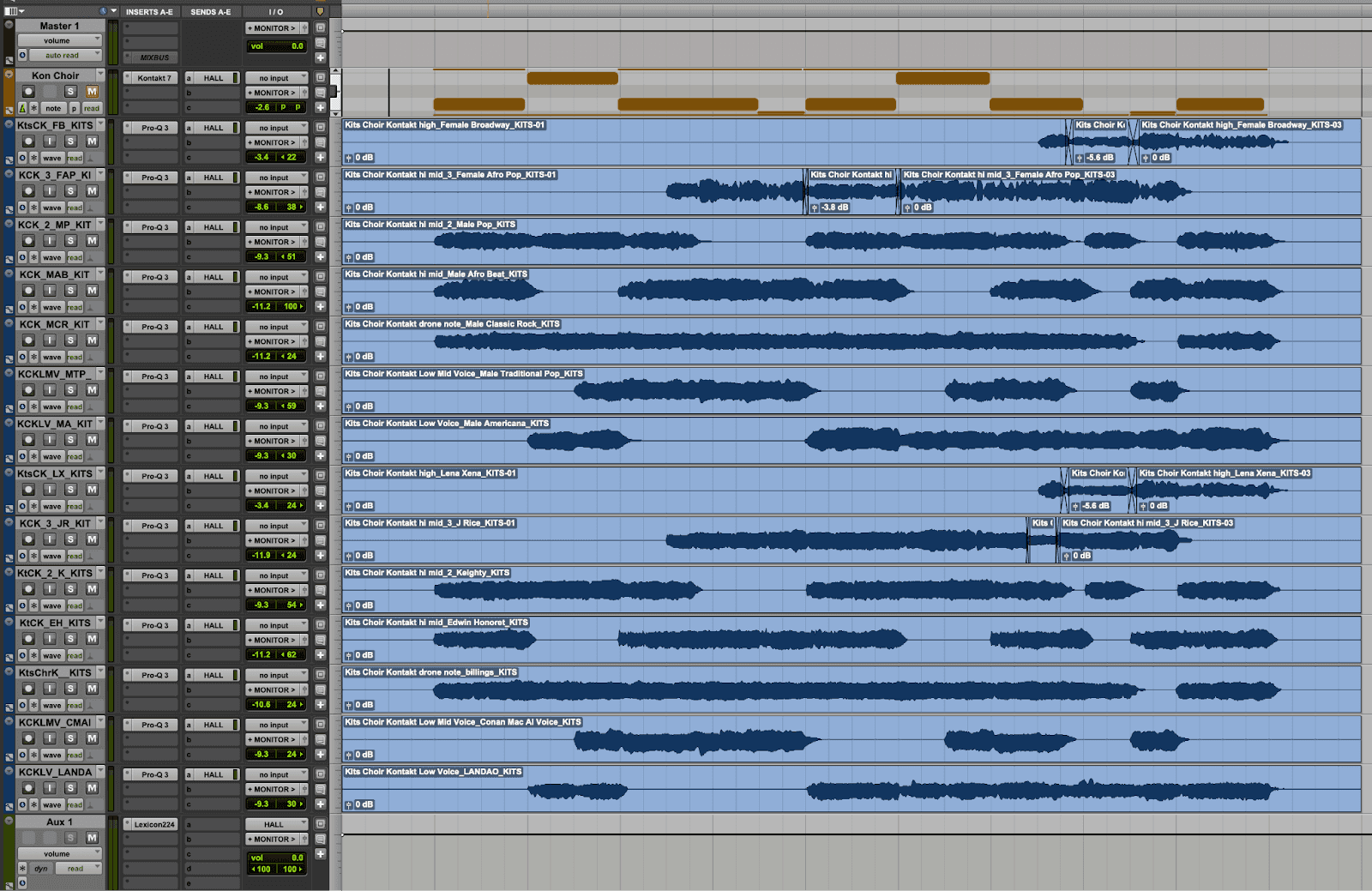
After some minor EQ’ing and panning, the moment of truth had arrived. The final results were impressive. My Kits AI choir was rich with unique vocal characteristics, offering an organic sound that the Kontakt version couldn’t match. Even without lyrics, the personality of each vocalist contributed to what became a completely unique choir.
Listen to the Comparison
Conclusion
While I may not have reached the otherworldly heights of the Hilliard Ensemble, this experiment with Kits.ai showcases the potential for creating choirs rich in personality and authenticity. Whether you’re scoring a film, producing a hit song, or composing for an a cappella group, Kits.ai is a valuable asset for any choir production. Create something out of the ordinary, expand your sonic palette, and explore the sonic possibilities with Kits AI. And don’t forget to check out Community Voices and Kits Earn to support and benefit the musicians who make this technology possible.
-SK
Sam Kearney is a producer/composer/sound designer based in Denver, Colorado.
